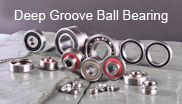The Beginning Process of Metal Casting
Metal Castings is the process of displacing the liquefied metal into a cast, which has a hollow enclosed space in a desired form and then allows the metal to cool off and inure. The hollow cavity is the cast (or mold), and it yields the desired form that resembles the part being manufactured. The finished product now is off the mold and ready to be polished. Metal Castings is very inefficient to those who create by sculpting, carving, boring or other means. Metal Castings is used to make complex or tailor-made parts of the metal that is very expensive or hard to manufacture via machining welding or other means.
The beginning process of metal casting is to get the essential mold. Metalworkers usually transmits in full detailed designs or patterns pertaining the size and form of the mold to a foundry or factory where metal castings are produced, that fabricates the mold and then send it to the casters. Lately, casters, who cast molten metal into the mold, finished the final products through the aid of computer design systems. Casters put the completed mold into a back up frame that contains a cooling apparatus. The liquefaction of the metal happens in a very particular place of the foundry; when the mold is done through casting in place, casters carry-over the liquefied metal from the liquefaction domain to large equipment above the mold. The equipments flow down the liquefied metal into the cast at a pre-set rate regulated by a computer. The mold full metal then hardens when the cooling equipment is excited. Lastly, the mold is exposed to the normal temperature of environment and the finished piece is removed and cleaned.
During the metal casting process, a number of problems can occur since casting metal is not that perfect process. When the liquefied metal is exposed to pollution, the resulting part will not be as impregnable and it might be broken down easily when it is removed from the mold. Furthermore, metal with contaminants might cause physical damage to the mold itself, causing it to become unusable. Formation of gas bubbles after the cooling process is also possible to be noticeable in the metal part might cause brittleness on the piece. When the cooling equipment is improperly utilized or not properly functioning, the liquefied metal may harden even if the cast is not yet filled out in full that might lead to deformations. Some casting methods are not that complex and can be easy dominated by hobbyists and skilled worker who are voluntarily want to control a chamber and work with liquid metal. Some other methods have more than requirements and needs even huge operation.



